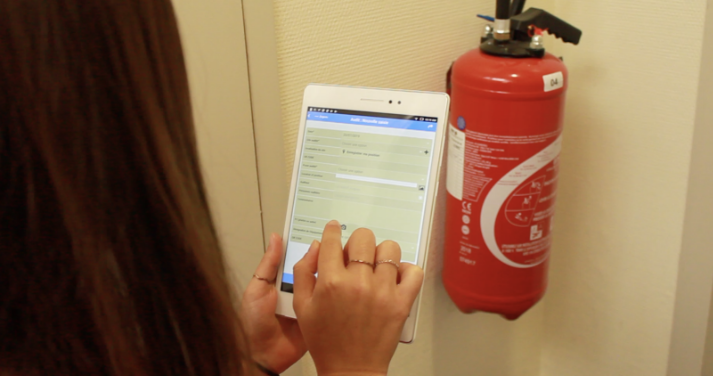The two schools of HSE digitization

Digital technology is a great opportunity for the HSE management and the operational teams to focus on the essentials. But for that, it is necessary that the digital transposition corresponds point by point to the reality in the field. A necessary condition for the digital technology to provide HSE added value to the service of the company's performance.
2 schools: "Flow Chart" vs "Dynamic Form"
The challenge of a digital solution is therefore its flexibility of parameterization to respond perfectly to the circuits of information, action and decision as experienced from the field to the general direction.
It is essential that the digital application can be easily reconfigured for necessary adjustments, because the company and its processes undeniably evolve over time.
The purpose of this article is therefore to compare two schools:
- One with “flow chart” digitalization software, whose parameterization concerns first of all the schematic conceptual representations of decision flows with trees and decision logic.
- The other with a "dynamic form" solution that first reproduces the collection of data in forms as it happens daily in the field on paper or office files such as Excel and Word.
Limitations of the FlowChart approach
Many software solutions have a "flowchart" approach that strives to represent decision flows, decision trees ...all determined by the unique will of the final decisional analysis,probably influenced for years by ERP swell known to constrain and freeze the organization in a company. The management of the billing and production chain can probably adapt, but in the field of Quality and HSE where processes are specific to each company and very different between companies, it is much more complicated.
The limits of the flow chart decision-making approach are:
- The relevance of the model in relation to the field reality.
- A decision tree does not take into account all the factors because the success of digitization is nested in the details of the activity of the operational people in the field. The digital solution, as beautiful as it is conceptualized by a decision tree, is impossible to deploy if there is a small missing link existing in the field and not reproduced in the digital tool. In the end this link will permanently block the digitization of the process.
- A "bushy" process diagram with flow diagrams, task networks, forms linked to shapes and other diagrams and opening source files or even other processes.
- Often it does not follow at the software configuration level, the decision tree just represented by a beautiful diagram can not be translated into the parameter options of the form fields of the software.
This "flow chart" approach is all the more problematic because it often does not focus on mobile access of field tools, smartphones and tablets.Conversely, with the progress of mobile development, there are now mobile apps developed in isolation from the rest of the HSE systems, zooming in on a small part of a process and not connected to the general organization, to other data of the company and types of user profiles. They do not bring lasting solutions in the long term.
Dynamic Form School: a pragmatic approach
On the contrary, the Quality HSE software approach by "dynamic form" is based on a workflow digitization triggered from the input fields in the forms exactly matching the reality of the action sequences in the field.
The "dynamic form" IT solution replaces the traditional paper or Word and Excel formats by improving them:
- The fields are conditioned by each other.
- Workflows are triggered automatically according to the implementation of the input mask fields.
- Thus the input mask passes from "hand to hand" according to the fields entered, either automatically or by the selection of the declarant.
- Entry rights make it possible to write-protect or even hide the input areas according to the actors and the Workflow stage.
- The entries can even be harmonized according to the actors and the Workflow stage..
- Alerts on thresholds and ceilings are triggered according to the values entered and aresent to targeted actors according to the type and or the criticality rate.
- The individualized dashboards by profile make it possible to identify the actions to be done.
- Cascade input scenarios can be set between forms ...
This very pragmatic "dynamic form" school has several other advantages:
- More flexible approach to use to deal with particular situations,
- Less change resistance for the users who grew into the traditional "paper" system,
- Parameterization simpler and easier to adapt to changes in organization.
It should be kept in mind that digitalization only works if it concern sall employees of a company, even their customers and subcontractors.
There can not be one part of the teams digitalized and another one onpaper or office software. The digitalization by "dynamic form" responds much better to this need than the "flow chart" school.
Digital system must enable the management of an organization's overall strategy by improving the management of its performance, while involving all the stakeholders on its various production sites: all employees, managers, managers, customers, partners and subcontractors.
Go further :
Label(s) : hse, HSE System, hse manager, HSE experts, process
















No comment